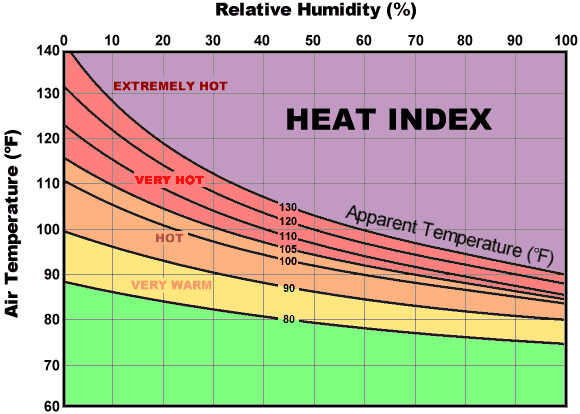
Severe thunderstorms capable of producing damaging wind gusts, large hail, and a few tornadoes, are likely to develop this afternoon from parts of the lower Ohio Valley into the southern Plains. An Enhanced Risk (Level 3 of 5) outlook has been issued. Further north, widespread rain showers are expected across portions of the Great Lakes and Northeast U.S. Read More >
The Heat IndexWe use this table to provide you with Heat Index values. These values are for shady locations only. Exposure to full sunshine can increase heat index values by up to 15°F. Also, strong winds, particularly with very hot, dry air, can be extremely hazardous as the wind adds heat to the body. The Heat Index Chart is below.  How to read the chart...Follow the temperature line until it intersects the relative humidity line. Then read the Heat Index on the curved line. For example, an air temperature of 100°F and Relative Humidity of 40%. Follow the 100°F temperature line until it intersects the 40% relative humidity line. Then curved line that also intersects is the Heat Index of 110°F, or Very Hot. That is the temperature the body thinks it is and attempts to compensate for that level of heat. Remember, these values are in the SHADE. You can add up to 15°F to these values if you are in direct sunlight. The chart below tells you the risk to the body from continued exposure to the excessive heat.
|
||||||||||||||||||||
  |